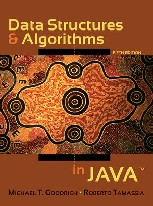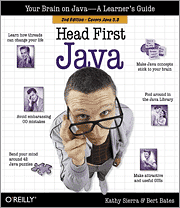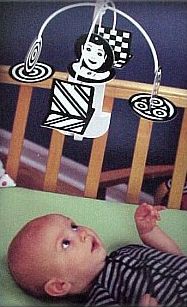
Data Structures
Prof. Jonathan Shewchuk
jrs@cory.eecs
(But send class-related mail to cs61b@cory.eecs so
the TAs can respond too.)
Spring 2012
Mondays, Wednesdays, and Fridays, 2:00–3:00 pm
1 Pimental Hall

|
CS 61B Data Structures
Prof. Jonathan Shewchuk |
The Final Exam will take place Tuesday, May 8 at 11:30–2:30 pm in 220, 230, and 234 Hearst Gymnasium. Students in the Disabled Students' Program who have requested extra time should report to 326 Soda Hall at the same time.
Please do not sit next to another person at the exam; you should have empty seats on both sides of you. The exam is open book, open notes, and closed electronics: if we catch you with electronic devices such as cell phones, laptops, or iPods on your person, you will get zero on the exam. Leave them at the front of the room. If your cell phone rings at the front of the room, you lose a point.



Labs, homeworks, and projects that are currently available can be accessed by clicking on them. Sadly, there will be no webcasts this semester, but you can access the webcasts from my Autumn 2006 offering of CS 61B through the Webcast Berkeley page provided by Berkeley's Educational Technology Services.
Some lecture notes can be obtained by clicking on the lecture titles
(for ASCII) or the PostScript
![]() or PDF
or PDF
![]() links (which save paper).
Please understand that they are lecture notes,
and that they were written so that I would have something to say in class.
I write them for me, not you,
and I make them available as a courtesy to you.
I edit them after class to make sure
they say the same thing I said in class.
If I receive complaints that my lectures and lecture notes do not differ,
I will stop making lecture notes available.
For related reasons, I will not make the lecture notes for a class available
until after the class has taken place.
links (which save paper).
Please understand that they are lecture notes,
and that they were written so that I would have something to say in class.
I write them for me, not you,
and I make them available as a courtesy to you.
I edit them after class to make sure
they say the same thing I said in class.
If I receive complaints that my lectures and lecture notes do not differ,
I will stop making lecture notes available.
For related reasons, I will not make the lecture notes for a class available
until after the class has taken place.
| Topic | Reading | Due | |
| 1: January 18 | Course overview | Sierra & Bates, pp. 1–9, 18–19, 84 | . |
| 2: January 20 | Using objects | S & B, Chapter 2; pp. 54–58, 154–160, 661, 669 | . |
| 3: January 23 | Defining classes | S & B, pp. 71–74, 76, 85, 240–249, 273–281, 308–309 | . |
| 4: January 25 | Types; conditionals | S & B, pp. 10–14, 49–53, 75, 78–79, 86, 117, 286–287, 292, 660 | Lab 1 |
| 5: January 27 | Iteration & arrays I | S & B, pp. 59–62, 83, 114–116, 293–300, 670 | Homework 1 |
| 6: January 30 | Iteration & arrays II | S & B, pp. 282–285 | . |
| 7: February 1 | Linked lists I | Goodrich & Tamassia, Section 3.2 | Lab 2 |
| 8: February 3 | Linked lists II | G & T, Section 3.3 | Homework 2 |
| 9: February 6 | Stack frames | Sierra & Bates, pp. 77, 235–239, 258–265, 663 | . |
| 10: February 8 | Testing | S & B, pp. 95–109, 662 | Lab 3 |
| 11: February 10 | Inheritance | S & B, Chapter 7; pp. 28–33, 250–257 | Homework 3 |
| 12: February 13 | Abstract classes | S & B, Chapter 8 | . |
| 13: February 15 | Java packages | S & B, pp. 154–160, 587–591, 667–668 | Lab 4 |
| 14: February 17 | Exceptions | S & B, pp. 315–338 | Project 1 |
| February 20 | President's Day | . | . |
| 15: February 22 | MIDTERM I | covers Lectures 1–12 | Lab 5 |
| 16: February 24 | More Java | S & B, pp. 189, 283 | Homework 4 |
| 17: February 27 | Game Trees | . | . |
| 18: February 29 | Encapsulation | S & B, pp. 80–84 | Lab 6 |
| 19: March 2 | Encapsulated lists | S & B, p. 664 | Homework 5 |
| 20: March 5 | Asymptotic analysis | Goodrich & Tamassia, Chapter 4 | . |
| 21: March 7 | Algorithm analysis | G & T, Chapter 4 | Lab 7 |
| 22: March 9 | Dictionaries & hash tables | G & T, Sections 9.1, 9.2, 9.5–9.5.1 | . |
| 23: March 12 | Hash codes; Stacks & queues | G & T, Chapter 5 | . |
| 24: March 14 | Trees and traversals | G & T, Chapter 7 | Lab 8 |
| 25: March 16 | Priority queues | G & T, Sections 8.1–8.3 | Homework 6 |
| 26: March 19 | Binary search trees | G & T, Section 10.1 | . |
| 27: March 21 | Balanced search trees | G & T, Section 10.4 | Lab 9 |
| 28: March 23 | Graphs | G & T, Sections 13.1–13.3 | Project 2 |
| March 26–30 | Spring Recess | ||
| 29: April 2 | Weighted graphs | G & T, Sections 13.5.1, 13.6–13.6.1 | . |
| 30: April 4 | Four sorting algorithms | G & T, Sections 8.2.2, 8.3.5, & 11.1 | Lab 10 |
| 31: April 6 | Quicksort | G & T, Section 11.2 | Homework 7 |
| 32: April 9 | MIDTERM II | covers Lectures 1–29 | . |
| 33: April 11 | Disjoint Sets | G & T, Section 11.4 | Lab 11 |
| 34: April 13 | Sorting & selection | G & T, Section 11.3.1 & 11.5 | Homework 8 |
| 35: April 16 | Radix sort | G & T, Section 11.3.2 | . |
| 36: April 18 | Splay trees | G & T, Section 10.3 | Lab 12 |
| 37: April 20 | Amortized analysis | . | Homework 9 |
| 38: April 23 | Randomized analysis | . | . |
| 39: April 25 | Garbage collection | G & T, Sections 14.1.2–14.1.3 | Lab 13 |
| 40: April 27 | Augmenting data structures | . | Project 3 |
| 41: April 30 | Sorting video | . | . |
| 42: May 2 | Review | . | Lab 14 |
| May 4 | . | . | Homework 10 |
The FINAL EXAM took place on Tuesday, May 8, from 11:30 am to 2:30 pm in 220, 230, and 234 Hearst Gymnasium. (CS 61B is in Exam Group 6.)
Prerequisites: CS 61A or Engineering 7. (The catalogue says “with a grade of B– or better,” but I've never seen this rule enforced.)
 “Let's see if I remember this. Do I splay the pineapple pizza through the Ted Nugent tea cozies? Or should I zig-zig the Versace laptops through Katy Perry first?” |